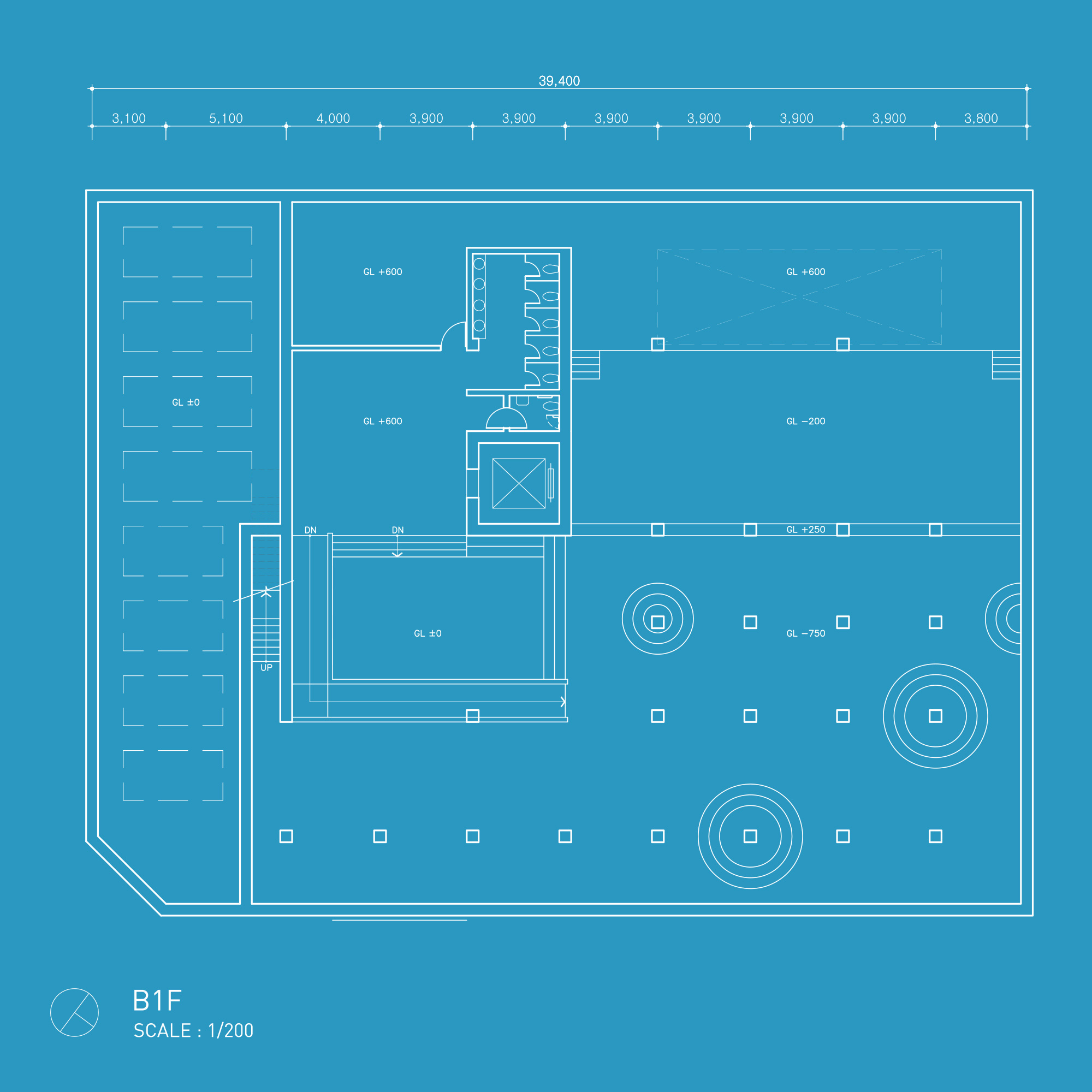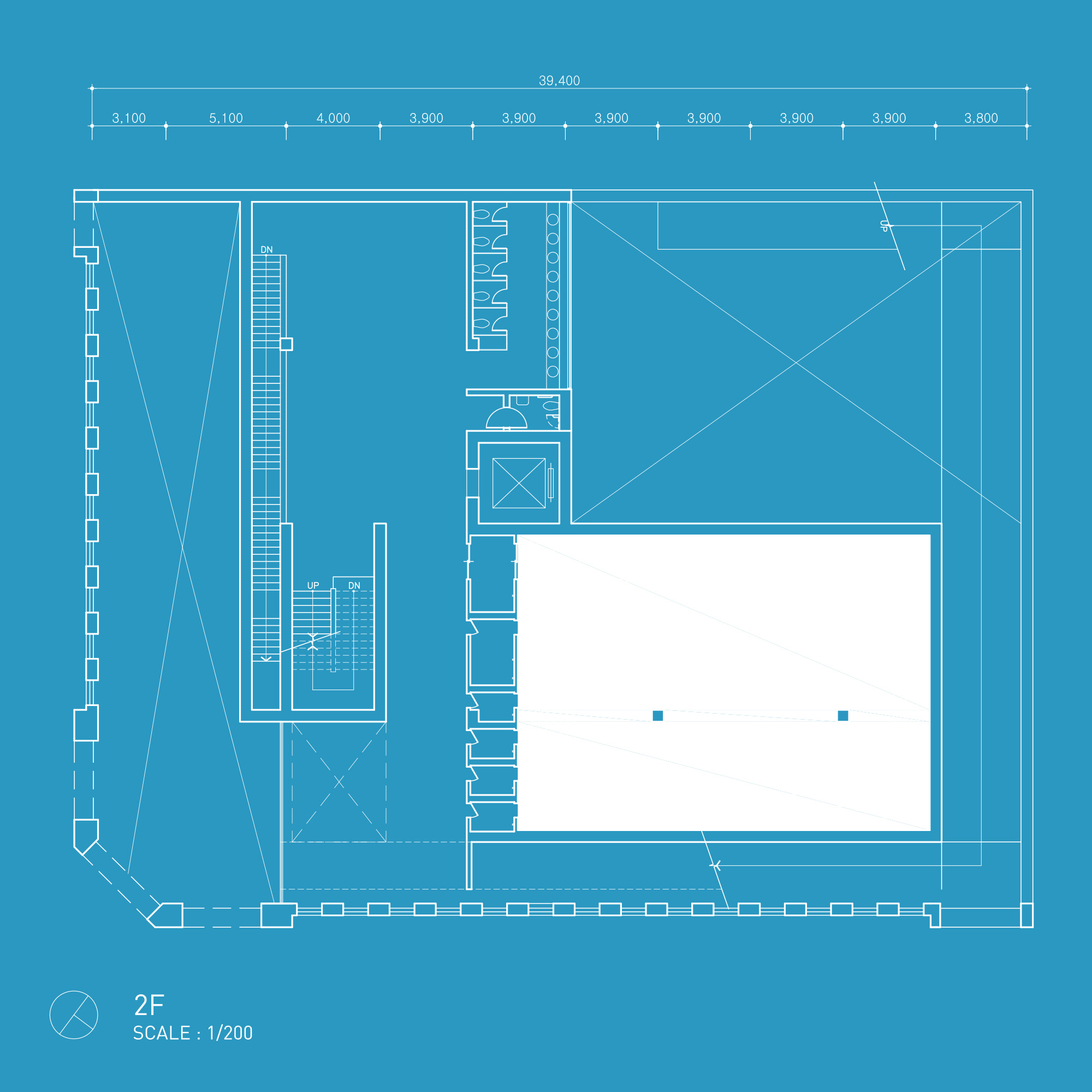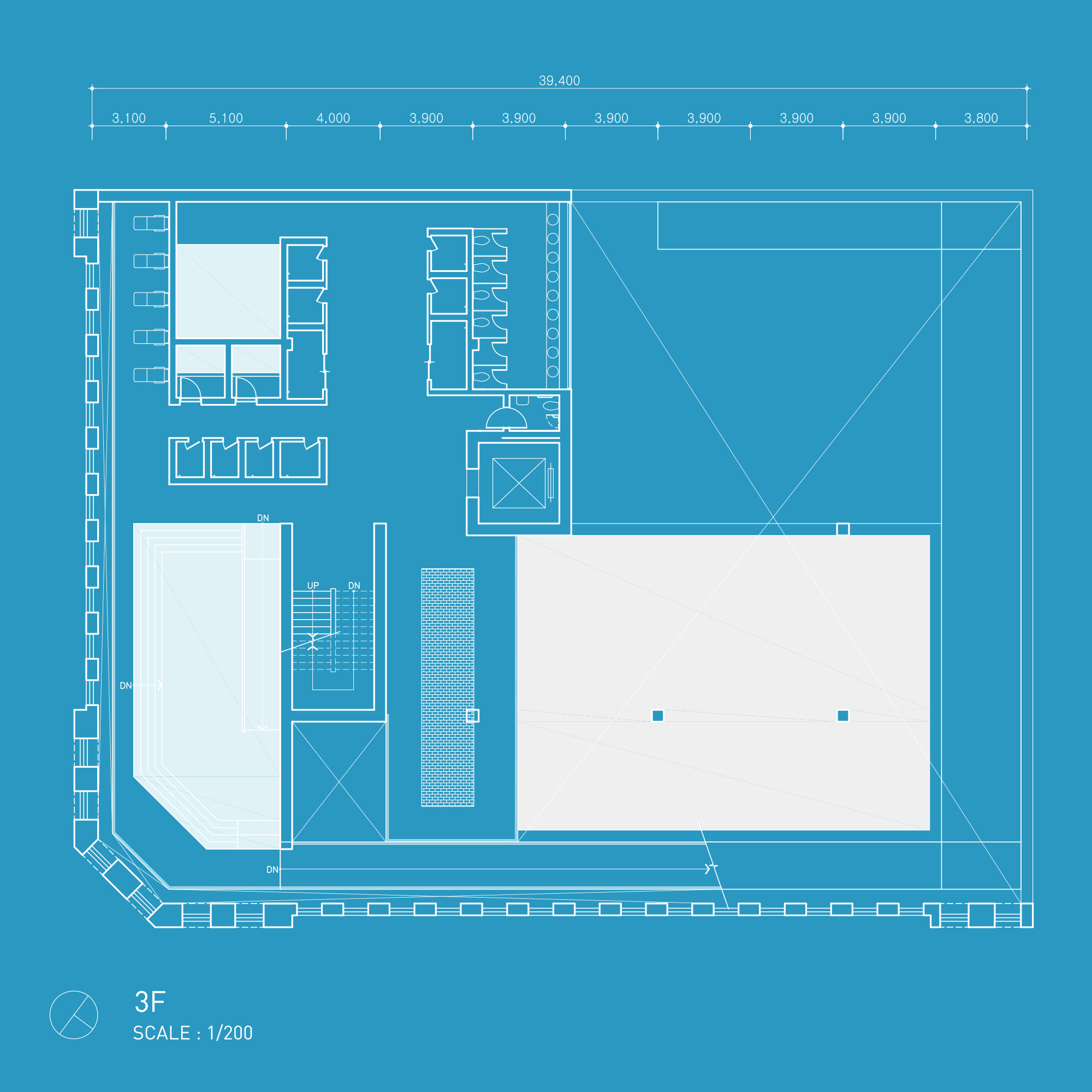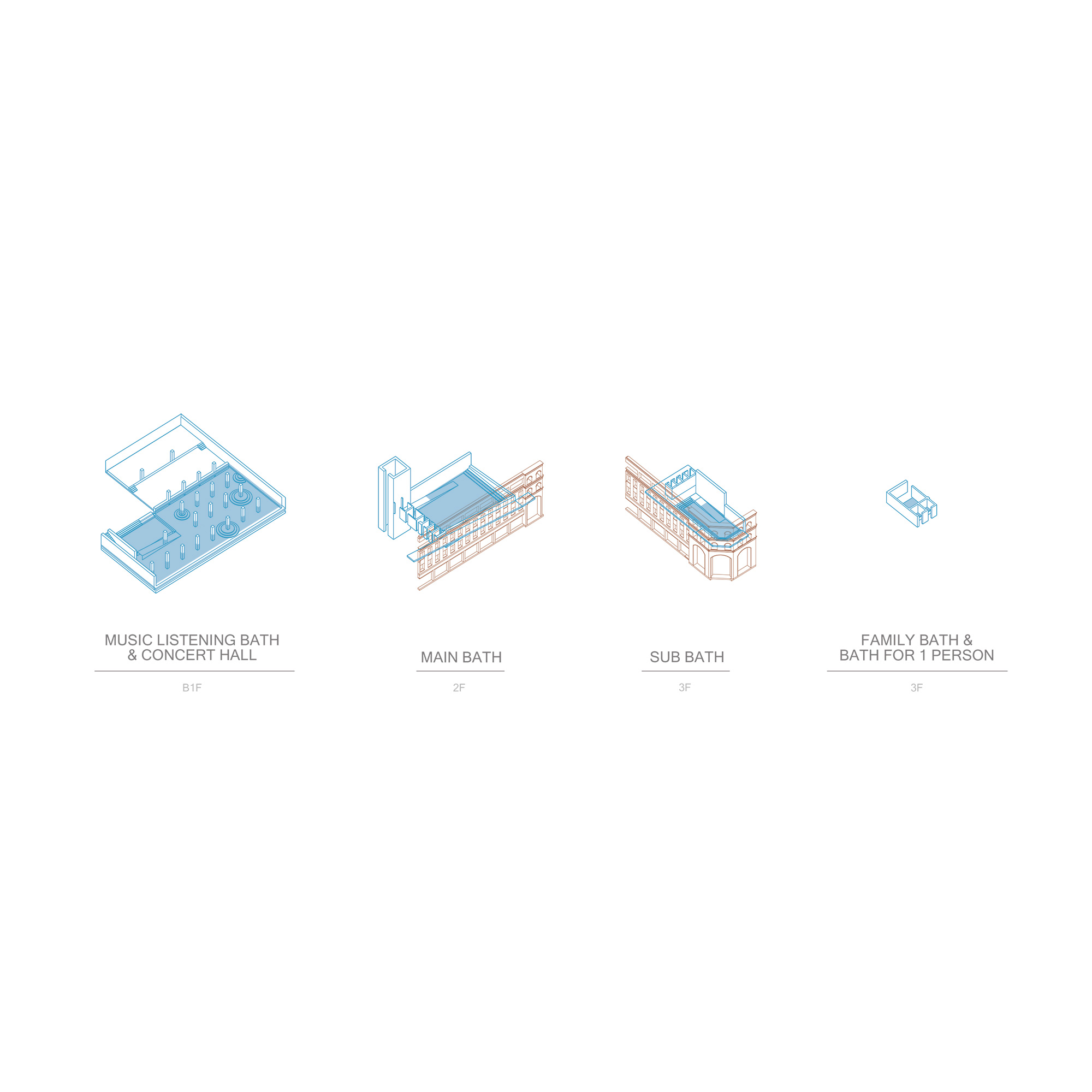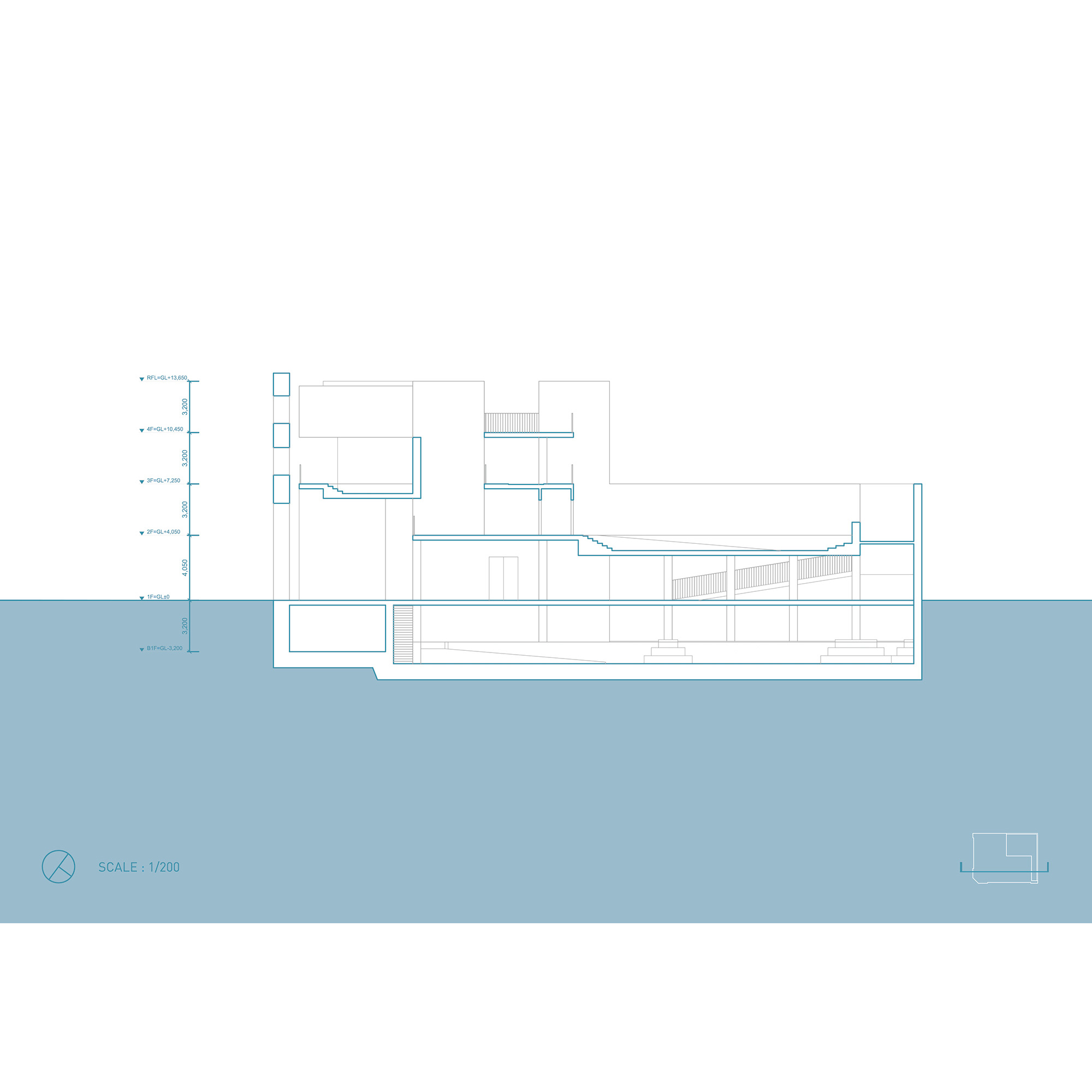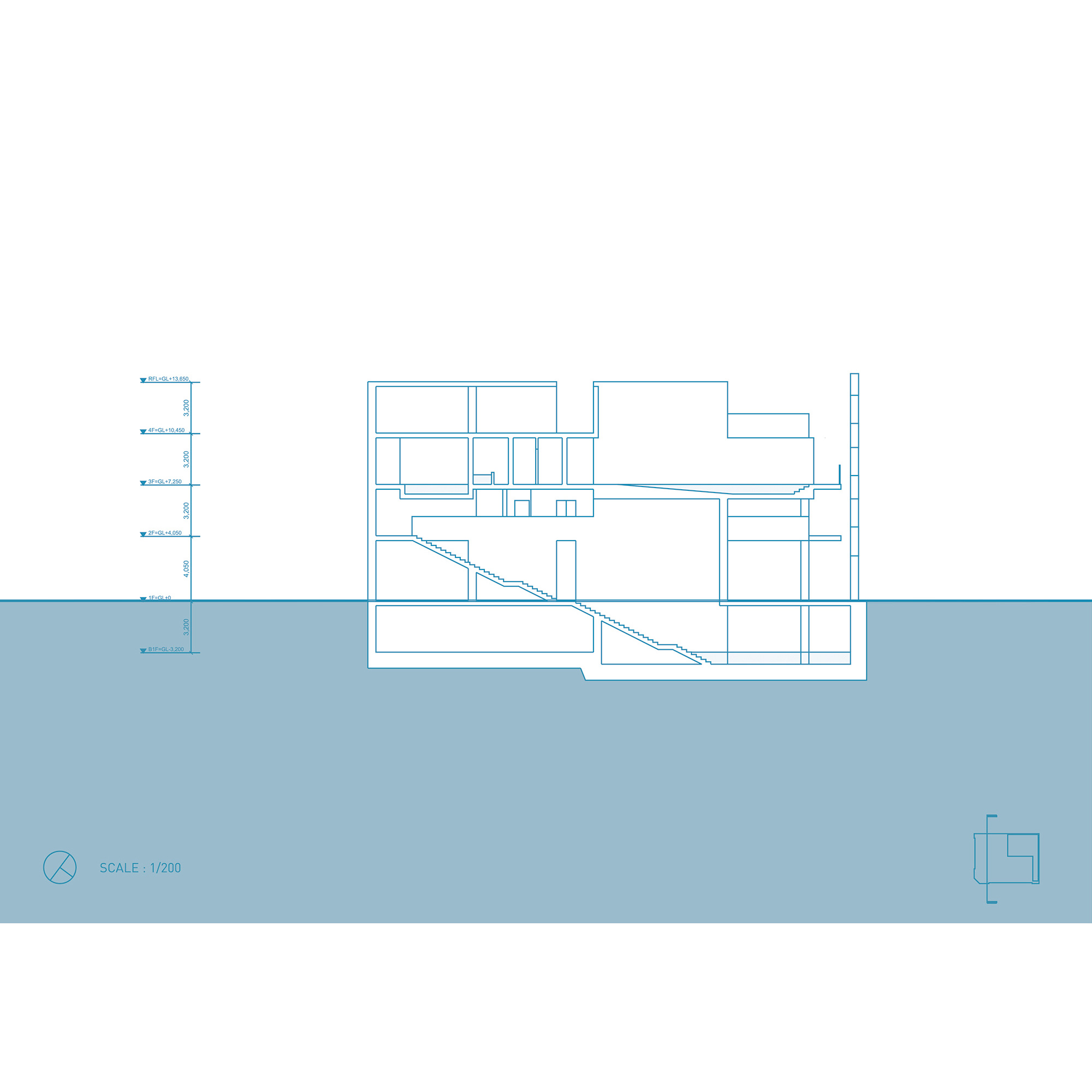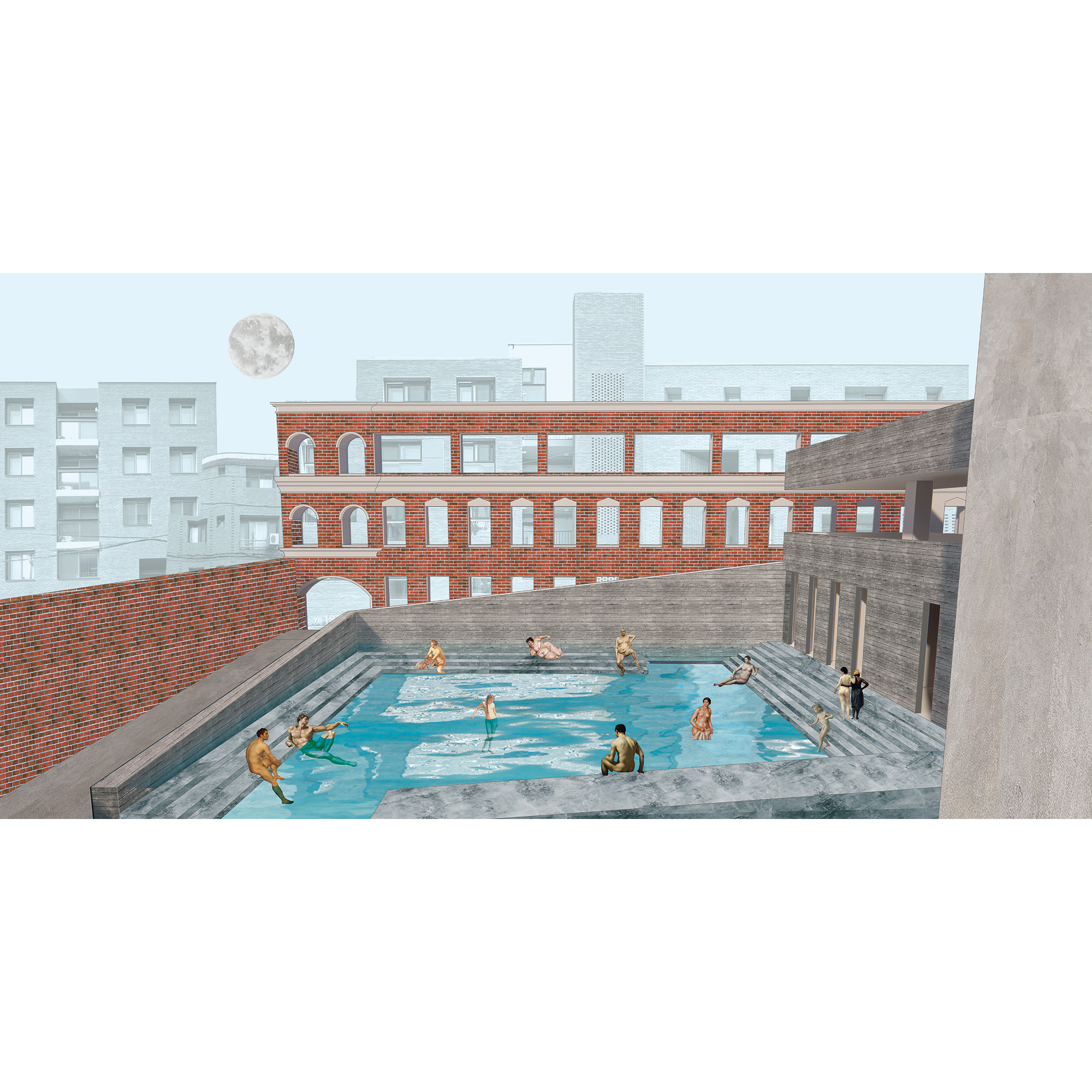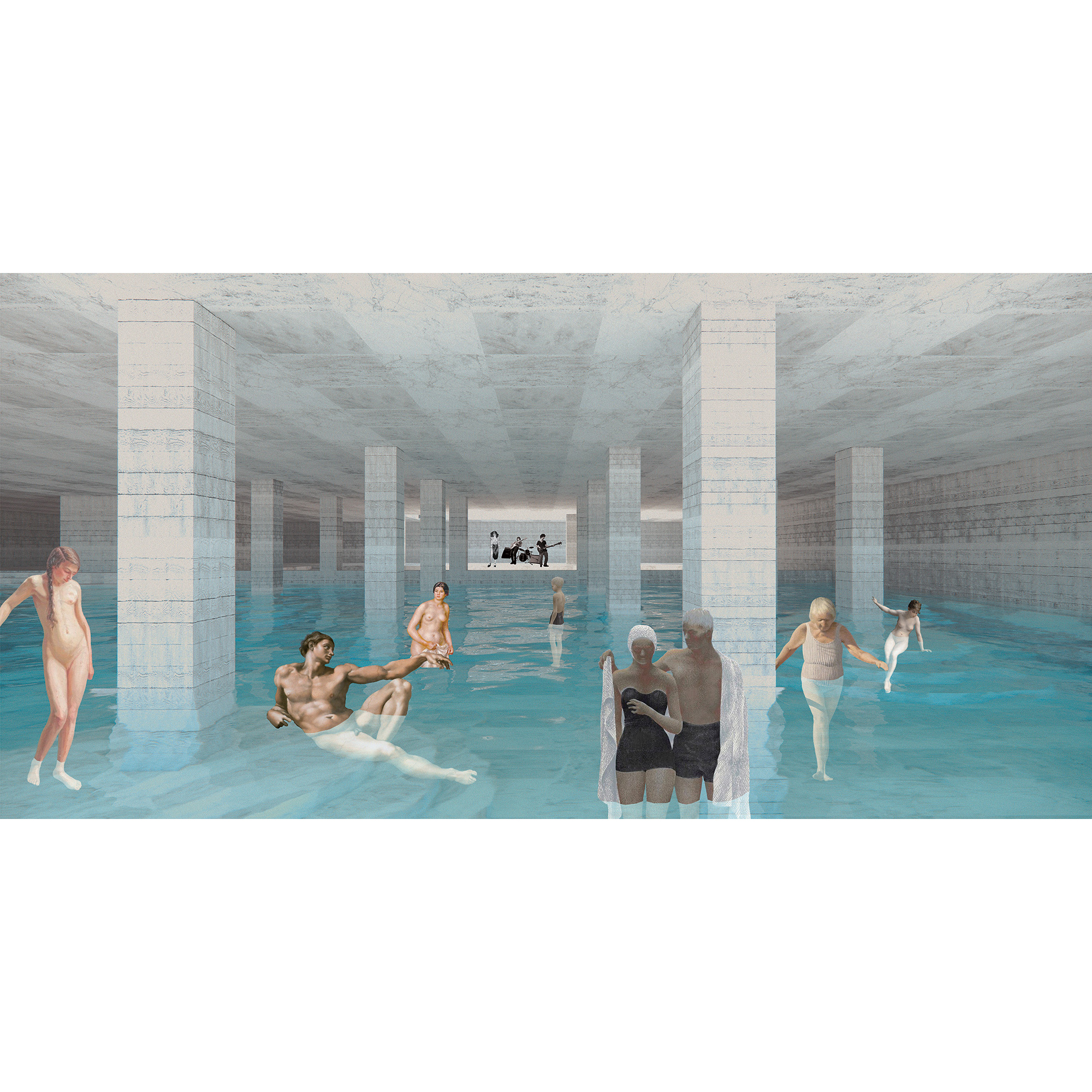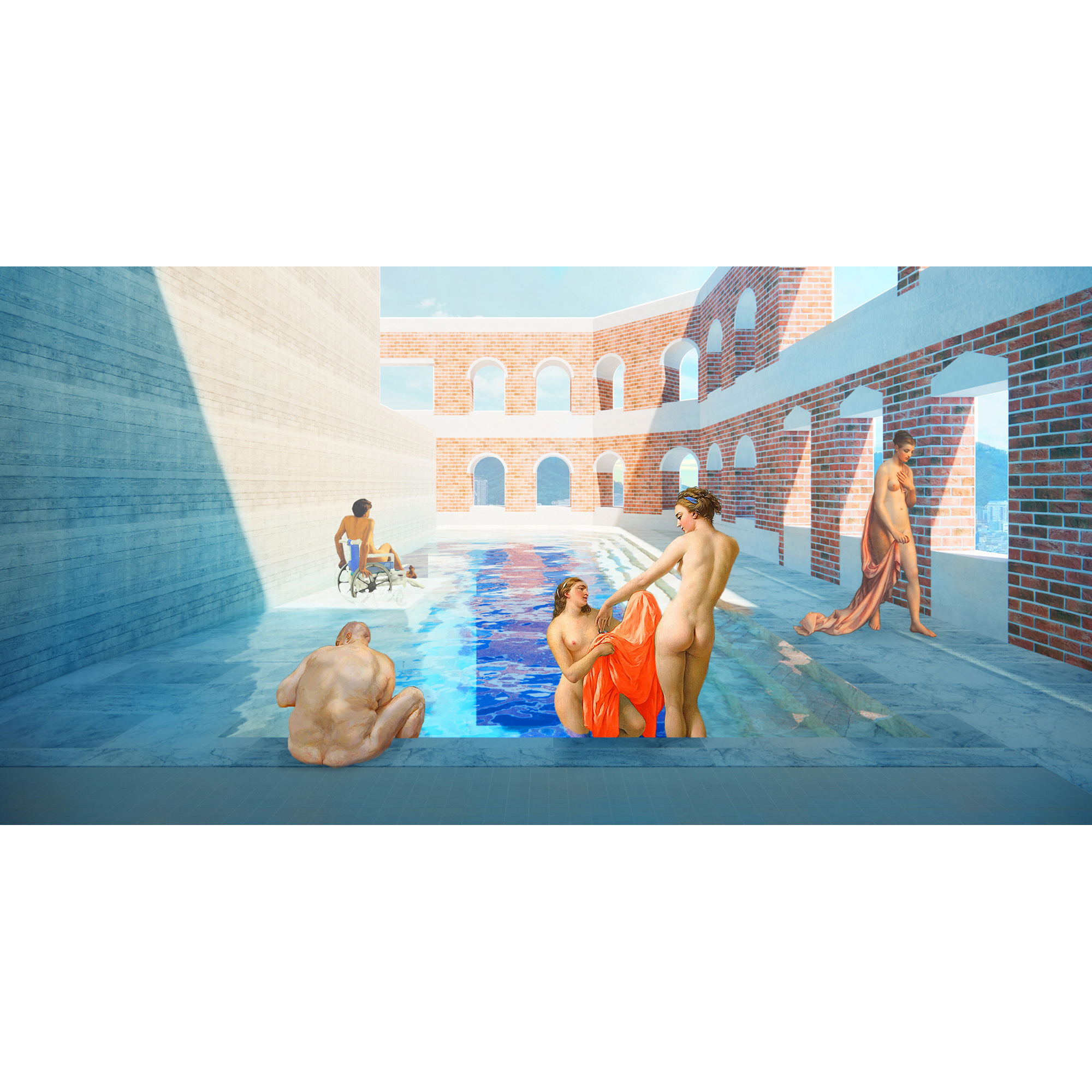송가현
Song Gahyeon
“도시로 돌아가면 여자들은 또다시 그늘로 돌아가야 했다. 노예와 거류 외국인도 도시에서 말할 수 있는 권리가 없었다. 그들 모두 차가운 육체이기 때문이었다.”
— 리처드 세넷, 『살과 돌』
건축은 차가운 육체를 어떻게 바라보고 받아들여 왔는가? 이 프로젝트는 도시에서 소외당해온 차가운 육체들을 건축이라는 언어를 통해 환대하려는 시도이자, 기존의 사회 질서와는 다른 방식으로 신체를 바라보는 언어를 공간 속에서 발견하려는 도전이다. 기존의 사회 질서 속에서 젠더, 장애, 인종, 나이 등의 사회적 구성요소로 이루어진 인간의 몸을 다르게 바라보도록 유도하기 위해 다양한 디자인 방식을 제안한다.
“퀴어”는 본래 “이상한”, “색다른” 등을 나타내는 단어였지만, 현재는 성소수자(레즈비언·게이·양성애자·트랜스젠더 등)를 포괄하는 단어로 사용된다. 퀴어 정체성은 젠더 개념에 의해 정의되는 육체들을 횡단한다. 그러나 도시는 젠더에 관한 정보가 명확하지 않은 육체를 시민으로 간주하지 않는다. 퀴어들의 육체는 그렇게 도시에서 자주 지워져왔다.
모든 몸들은 환대받아야 하며, 환대는 장소를 필요로 한다. 환대라는 것은 모든 사람에게 자리를 인정하고 마련해주는 일이기 때문이다. 이러한 환대가 이루어지지 않음에도 불구하고, 문화적·사회적 소수자들이 도시의 특정 지역에 자발적으로 모여 그들의 삶과 문화를 일구는 경우가 있다. 한국의 종로3가, 이태원, 마포를 그 예로 들 수 있다. 종로와 이태원의 경우 주로 게이와 트랜스젠더를 포함한 퀴어들의 유흥과 모임의 공간으로서 역사가 길고, 마포는 주로 여성 퀴어들의 공간이며 진보 단체의 공동체 활동이 많이 이뤄져 온 곳이다. 퀴어 공간이 지역 내에 넓게 분포해 있다. 매핑을 통해 마포는 퀴어 공간이 주민들의 삶에 맞닿아 있음을 발견했고, 이를 비가시화된 queer space라 정의하고 사이트로 선정했다. 연남동에 위치한 해당 건물은 본래 여러 상가들과 목욕탕, 주거공간으로 이루어져 있다. 고전주의 양식과 옛날 목욕탕의 요소들을 가진 독특한 입면을 껍질로서 보존하고, 기존의 그리드를 활용하여 내부의 공간을 새롭게 구축하는 방식으로 설계를 진행했다.
옷을 입은 몸들은 가장 먼저 아치 형태로 된 문을 통과하고, 열주가 늘어선 내부광장에 들어온다. 열주는 마당 혹은 탈의실로 사람들의 동선을 유도한다. 1층은 이 건물을 소개하는 공간이자 선언적인 공간이다. 1층의 내부광장에서는 천장에 2층 탕의 바닥이 보인다. 물과 함께 보이는 살의 실루엣은 이 공간에서의 경험을 예고하듯 일렁인다. 또한 1층에는 탈의실이 위치하는데, 이곳에 들어옴으로써 사람들은 앞으로 이 건물에서의 경험을 선택하게 된다. 1층의 탈의실을 거쳐야만 이 건물의 다른 공간을 이용할 수 있기 때문이다. 2층은 메인 탕이 있는 공간으로, 큰 스케일의 공용 공간에서 다양한 몸들이 섞이게 된다. 그 전에 개인 샤워실을 거치고 물에 몸이 잠기게 함으로써
3층에선 스케일이 조금 더 작아진다. 몸들은 더 가까워지고, 공간은 잘게 나뉜다. 2층에서 한 번 섞이고 친밀해진 몸들은 3층과 4층 혹은 지하 1층에 도달해 목욕과 관련된 다양한 프로그램을 경험한다. 지하 1층에선 물 속에서 음악을 듣거나 공연을 감상할 수 있다. 지하 1층으로 가는 계단은 의도적으로 좁은 폭으로 설계하여 몸들이 맞닿을 정도의 가까운 거리에서 서로를 마주하게 된다. 4층에는 북카페와 테라스가 있어 책을 읽으며 쉬거나 햇빛을 받으며 누워있을 수 있다. 벗은 몸과 가려진 몸, 물에 젖은 몸과 건조한 몸은 이 건물을 돌아다니며 마주하고 뒤섞인다. 따뜻한 물에서 나오는 김과 물소리는 서로 다른 몸들을 감싼다.
“Back in the city, the women had to go back to the shade again. Slaves and expatriates also had no right to speak in the city. It was because they were all cold bodies.”
— Richard Sennett, “Flesh and Stone”
How has architecture looked at and embraced the cold body? This project is an attempt to hospitalize cold bodies that have been alienated from the city through the language of architecture, and a challenge to find a language in space that looks at the body in a different way than the existing social order.
Various design methods are proposed to induce different views of the human body consisting of social components such as gender, disability, race, and age in the existing social order.
Queer was originally a word for “strange” or “unique”, but is now used to cover sexual minorities (such as lesbian, gay, bisexual, transgender, etc.). Queer identity traverses bodies defined by gender concepts. However, cities do not consider bodies whose information about genders is unclear as citizens. The bodies of queers have been so often wiped out of the city.
All bodies should be welcomed, and hospitality needs a place. This is because hospitality is a work that recognizes and prepares seats for everyone.
Despite the lack of such hospitality, there are cases in which cultural and social minorities voluntarily gather in certain areas of the city to cultivate their lives and cultures. Examples include Jongno 3-ga, Itaewon, and Mapo in Korea. Jongno and Itaewon have a long history as a space for entertainment and gatherings of queers, mainly gay and transgender, and Mapo is a space for female queers and has been a place where many community activities have been carried out by progressive groups.
Queer spaces are widely distributed within the region, Mapo. Through mapping, I found that the queer space was in contact with the lives of residents in Mapo and defined it as an invisible queer space and selecting it as a site.
Located in Yeonnam-dong, the building originally consists of several shops, residential spaces and the baths in the basement floor. The design was carried out by preserving a unique facade with classical style and elements of an old bathhouse as a shell, and constructing a new interior space using the existing grid.
The dressed bodies are the first to pass through the arched door and enter the peristyle. Peristyle leads people to a yard or dressing room. The first floor is a space that introduces this building and a declarative space. From the inner square on the first floor, you can see the bottom of the two-story bath on the ceiling. The silhouette of the flesh seen with water fluctuates as if noticing an experience in this space. In addition, there is a changing room on the first floor, and by entering here, people will choose to experience the building soon. This is because other spaces in this building can only be used through the changing room on the first floor. The second floor is a space with a main bath, and various bodies are mixed in a large-scale public space. Before that, you go through your personal shower room and let your body soak in the water. On the third floor, the scale is a little smaller. The bodies get closer, and the space is divided into small pieces. The bodies that are mixed and intimate once on the second floor reach the third and fourth floors or the first basement floor to experience various programs related to bathing.
On the first basement floor, you can listen to music or enjoy performances in the water. The stairs from the first basement floor to the second floor are deliberately designed to have a narrow width, so people face each other at a close distance enough to touch each other. On the fourth floor, there is a book cafe and terrace where you can rest while reading books or lie down in the sun. The naked body, the hidden body, the wet body, and the dry body move around this building and face each other and mix. The steam from warm water and the sound of water surrounds various bodies.
